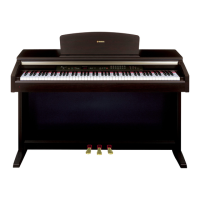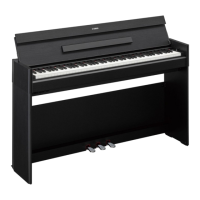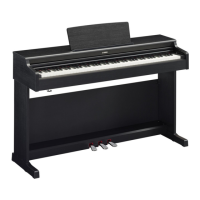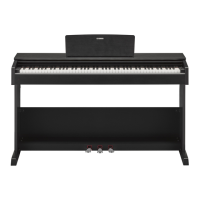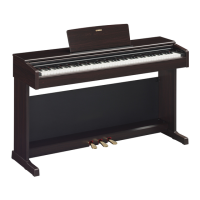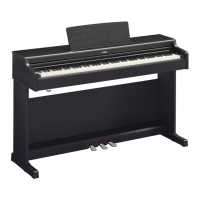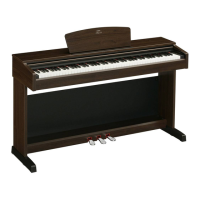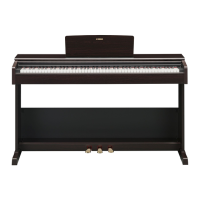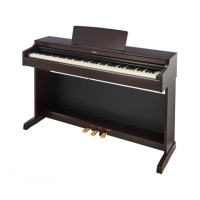YDP-223
Digital piano
Owner's Manual
Bedienungsanleitung
Mode d'emploi
Manual de instrucciones
Before using the YDP-223, be sure to read “Precautions„ on pages 6 -7.
Achten Sie darauf, vor Einsatz des YDP-223 die “Vorsichtsmassnahmen„
auf Seite 6-7 durchzulesen.
Avant d'utiliser le YDP-223, lire attentivement la section
«Precautions
d'usage» aux pages 6- 7.
Antes de utilizar el YDP-223, lea las
“Precauciones„ que debe tener en
cuenta en las páginas 6 - 7.
IMPORTANT
Check your power supply
Make sure that your local AC mains voltage matches the voltage specified
on the name plate on the bottom panel. In some areas a voltage selector
may be provided on the bottom panel of the main keyboard unit near the
power cord. Make sure that the voltage selector is set for the voltage in
your area. The voltage selector is set at 240V when the unit is initially
shipped. To change the setting use a "minus" screwdriver to rotate the
selector dial so that the correct voltage appears next to the pointer on the
panel.
WICHTIG
Überprüfung der Stromversorgung
Vergewissern Sie sich vor dem Anschließen an das Stromnetz, daß die
örtliche Netzspannung den Betriebsspannungswerten auf dem Typenschild
an der Unterseite des Instruments entspricht. In bestimmten
Verkaufsgebieten ist das Instrument mit einem Spannungswähler an der
Unterseite neben der Netzkabeldurchführung ausgestattet. Falls vorhanden,
muß der Spannungswähler auf die örtliche Netzspannung eingestellt
werden. Der Spannungswähler wurde werkseitig auf 240 V voreingestellt.
Zum Verstellen drehen Sie den Spannungsregler mit einem
Schlitzschraubendreher, bis der Zeiger auf den korrekten Spannungswert
weist.
IMPORTANT
Contrôler la source d'alimentation
Vérifiez que la tension spécifiée sur le panneau inférieur correspond à la
tension du secteur. Dans certaines régions, l'instrument peut être équipé
d'un sélecteur de tension situé sur le panneau inférieur du clavier à
proximité du cordon d'alimentation.
Vérifiez que ce selécteur est bien réglé en fonction de la tension secteur de
votre région. Le sélecteur de tension est réglé sur 240 V au départ d'usine.
Pour modifier ce réglage, utilisez un tournevis à lame plate pour tourner le
sélecteur afin de mettre l'indication correspondant à la tension de votre
région vis à vis du repère triangulaire situé sur le panneau.
IMPORTANTE
Verifique la alimentación de corriente
Asegúrese de que tensión de alimentación de CA de su área corresponde
con la tensión especificada en la placa de características del panel inferior.
En algunas zonas puede haberse incorporado un selector de tensión en el
panel inferior de la unidad del teclado principal, cerca del cable de
alimentación. Asegúrese de que el selector de tensión esté ajustado a la
tensión de su área. El selector de tensión se ajusta a 240V cuando la unidad
sale de fábrica. Para cambiar el ajuste, emplee un destornillador de cabeza
"recta" para girar el selector de modo que aparezca la tensión correcta al
lado del indicador del panel.
